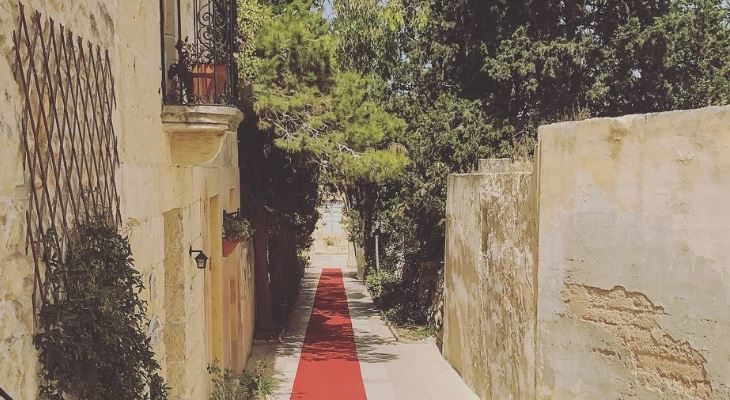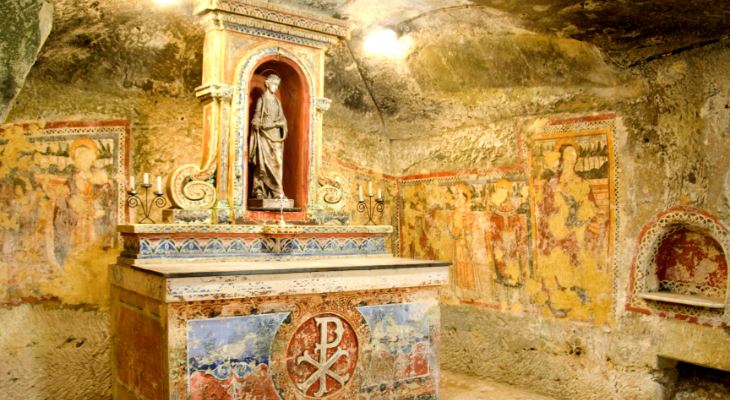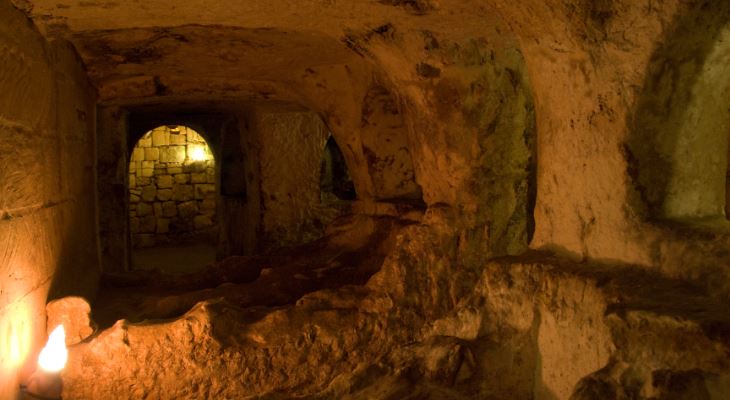Dr Charlene Vella reveals what lies beneath, and why.
In the Late Medieval period, cave churches started to appear around the Maltese Islands, specifically in Rabat. Rabat’s strategic distance from Mdina made it the perfect spot to bury the deceased, since, at the time, burials could only take place outside the city walls. Dr Charlene Vella, from the Department of Art and Art History at the University of Malta, shares her knowledge on the underground world of Rabat.
The Late Medieval cave churches in Rabat were largely recut from catacombs and served as burial grounds as well as worship areas for the early Christians in Malta, Dr Vella explains. “The local cave churches are very likely a repercussion of the presence of Greek-rite Basilian monks on the Maltese islands in the Late Middle Ages, whose presence in Malta was to re-Christianise locals following the long Muslim occupation.” Such examples are seen in the Abbatija tad-Dejr and St Agatha Cave Complex - both of which feature interesting depictions and engravings.

Toni Cassar Dowling
Dr Vella explains that the caves also have a symbolic reference to the birthplace of Christ, “that was seen as a prefiguration of the Entombment and Resurrection.”

Viewing Malta / Mario Galea
Dr Vella explains that, when it comes to stylistic influences in the Rabat cave churches, saintly figures often adorn the churches, although a variety of styles is visible: “they can display Byzantine characteristics blended with Western ideologies, but others were also executed in the Renaissance period.” St Agatha’s cave church features 13 depictions of Agatha, highlighting the believers’ reverence towards the saint.

Viewing Malta / Mario Galea
Although most saints can not be identified with great ease, the symbols associated with each figure help art historians to name the saints and highlight their attributes, and sometimes, Latin names are painted onto the cave walls, making things a whole lot easier. Authorship is something of a mystery when it comes to cave paintings however - Dr Vella explains that “the early sixteenth century paintings in St Agatha’s cave church were probably entrusted to a Sicilian/Messinese artist, while others were executed by Basilian painter-monks themselves to aid in worship. There was no one dominant artist.”
Other localities in Malta also feature a number of cave churches, such as the Sanctuary of the Virgin in Mellieha; Dr Vella’s favourite cave church on the island featuring an intriguing titular altarpiece and a recently restored Late Medieval Virgin and Child painting. Her top cave church in Rabat is St Agatha’s - its apse mural serves as a key focus point for Dr Vella due to her research in Messinese Renaissance artists with a connection to the Maltese islands. Sadly, the restoration that has recently taken place at St Agatha’s cave church proves to have impaired future studies, due to the “virtual repainting of the paintings than restoration of the original paintings.”